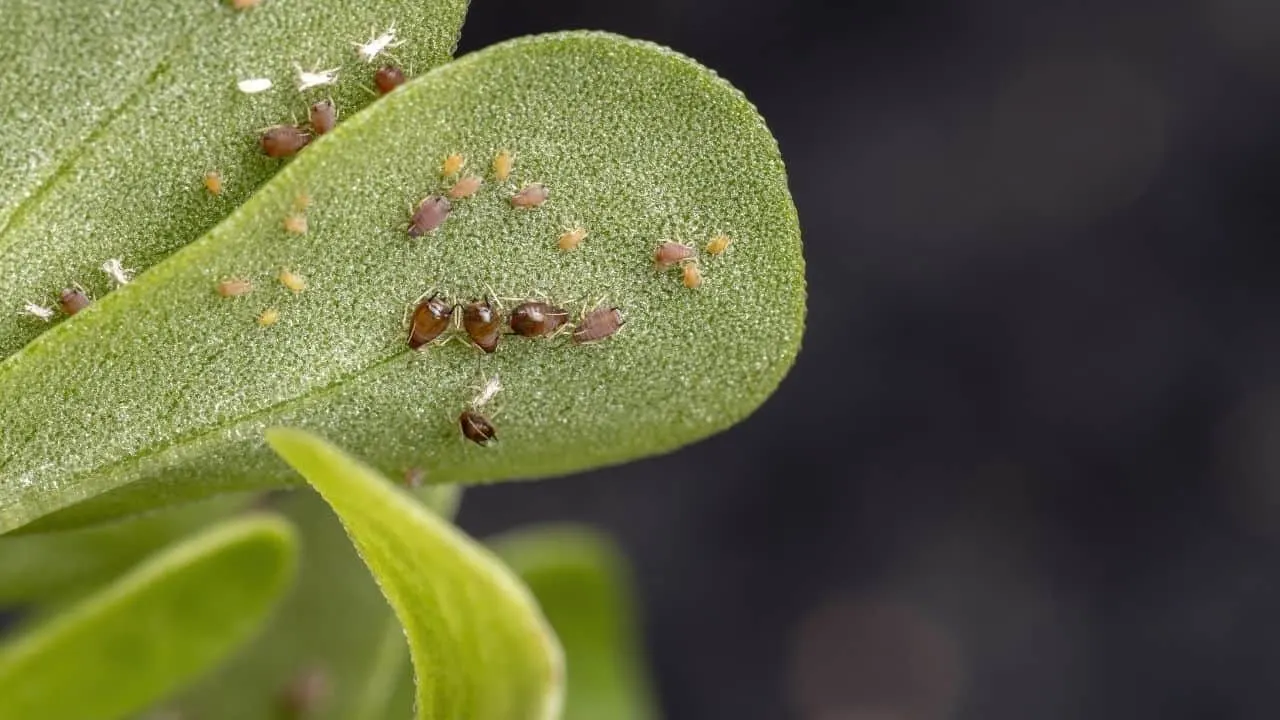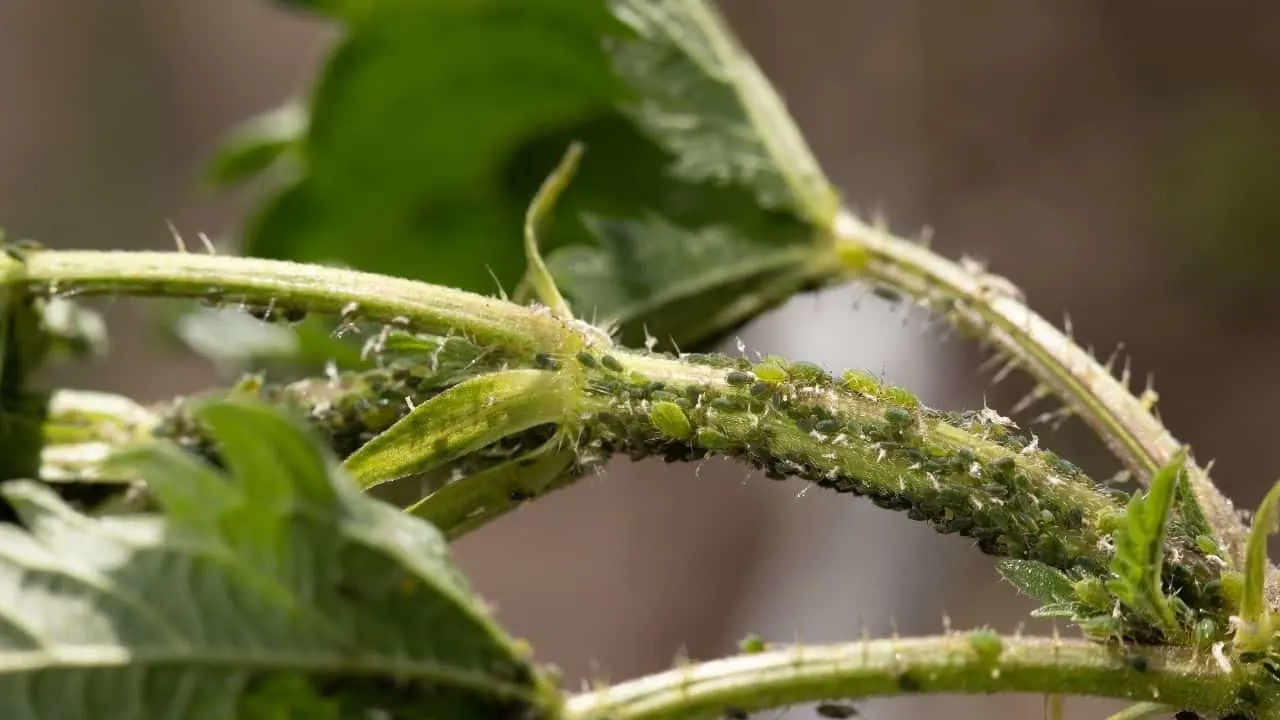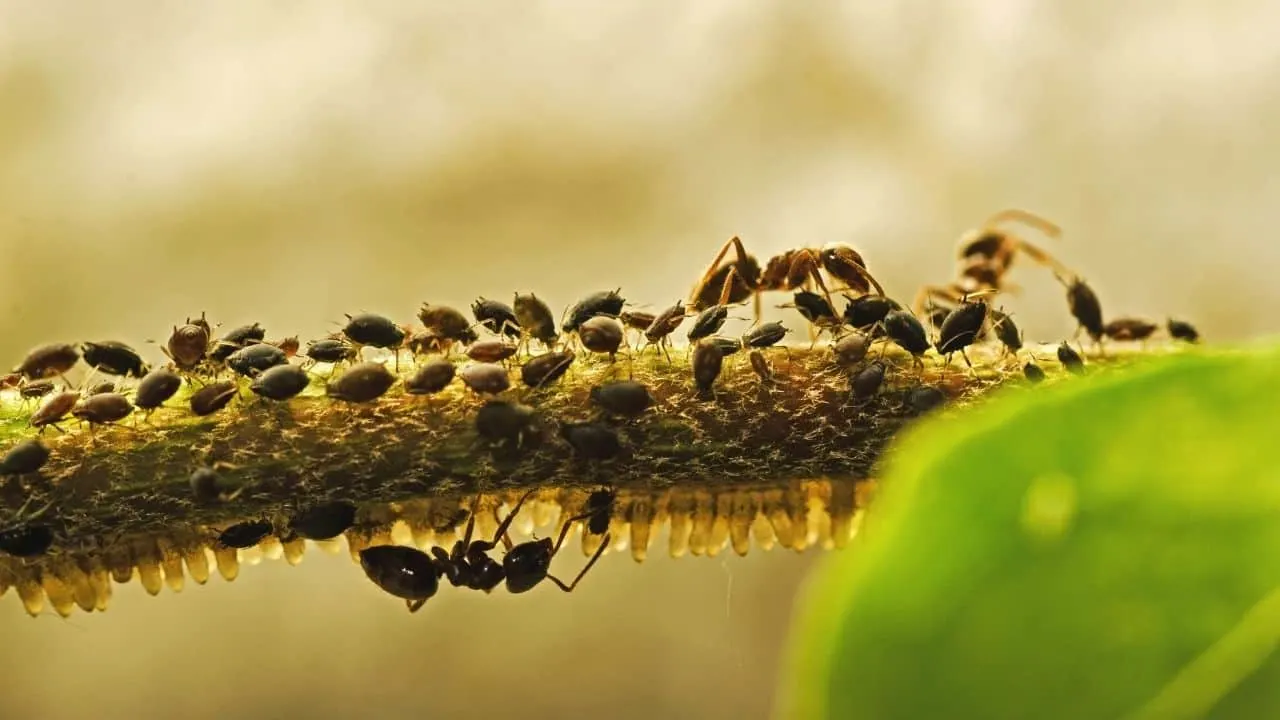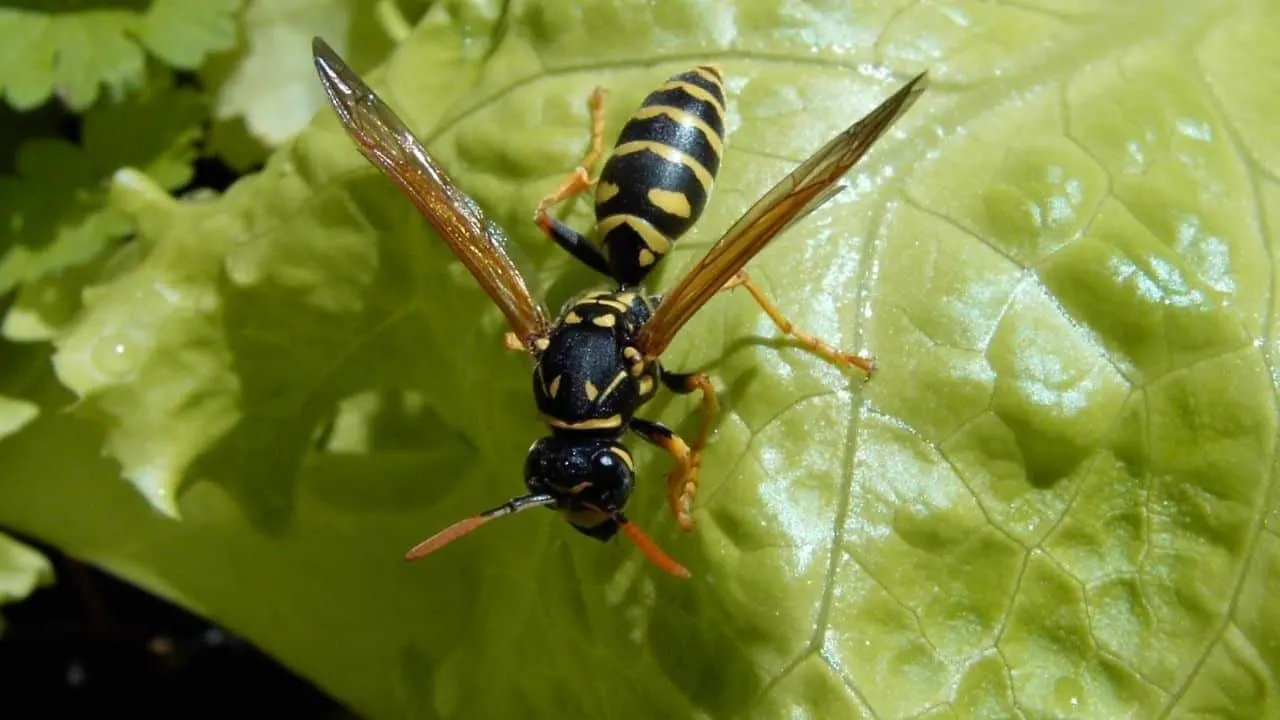You’re working in your garden and see something crawling on the leaves. You look closer and see tiny brown bugs moving on the leaves.
You may even see ants with the tiny bugs. These tiny brown bugs are aphids.
They can harm plants and should be treated as soon as possible because they can transmit viruses and other illnesses to plants.
Table of Contents
What are These Tiny Brown Bugs?
Aphids come in many colors, including brown. They harm plants by drinking the plant’s sap, and by transmitting plant diseases like the citrus tristeza virus. First, use a strong spray of water to kill them before resorting to stronger methods like using neem oil or pesticides.
A Note About the Brown Citrus Aphid
If you live in Florida and have one or more citrus trees, then there’s a certain brown aphid that could really harm your trees. It likes to feed on the stems and leaves of trees.
It’s the brown citrus aphid (Toxoptera citricida).
Fortunately, the pest has not spread to other parts of the United States but is common in most of the world.

Although called brown citrus aphids, they sometimes appear black. They can have wings.
When you squash one, the color from it is reddish-brown, according to the University of California Riverside Department of Entomology.
These aphids are so harmful not only because they suck so much liquid from a tree, but they inject a tree with a deadly illness called the citrus tristeza virus (CTV). CTV is incurable.
Trees need to be treated with insecticide sprays. Natural predators can be used, but only after getting rid of the worst of the aphids in order to stop them from killing the tree.
After natural predators are released, pesticides can no longer be used.
Identifying Aphids
Aphids come in many colors, but green, brown, red, yellow, pink, and grey are common. Sometimes they change color depending on their stage of life, when they feed or if they die.
They are incredibly tiny, pear-shaped bugs, measuring just 1/16th to 1/8th of an inch (about 3 to 4 mm). They have two long, antennae-like protrusions from their hind ends.
These protrusions are enchantingly called “tailpipes.”
The aphids you see on your plants are usually immature aphids, called nymphs. Mature aphids have longer, bumpier bodies and have wings.
They also may be different colors than the nymphs. For example, the green peach aphid (Myzus persicae (Sulzer)) tends to have brown winged adults, but pale green nymphs.

Some aphids species don’t have winged adults.
To make things even more confusing, aphids often turn dark brown or black when they die. So, when you’re treating your plants for aphids, seeing a lot of brown aphids may be ideal.
Aphid Damage
The first sign of aphids is often a big uptick in ants among your plants. Aphids are able to make honeydew liquid from their rear ends.

Ants find this drink irresistible, so they swarm the aphids, sometimes protecting them. Some ants even herd aphids like cattle, like ants herding brown aphids in this video.
Aphid honeydew also attracts yellowjackets, so if there are suddenly a lot in your garden, look for aphids.

The next sign of aphid damage will be caused by the honeydew. Aphids will excrete it, whether there are other insects to drink it or not.
Honeydew is a sticky, clear liquid that will get all over the plants and anything near the plants. Honeydew often causes leaves to stick together.
It can also trigger the growth of mold, which can injure plants.
Another sign of damage will be withered, yellowed, or curled leaves. New leaves are far smaller than they should be.
They may also be oddly shaped. Fruits or vegetables will also be small and misshapen.
Your plants may not flower or take a long time to flower.
Treating Aphids
The bad news is that your plants have aphids, and probably ants. The good news is that aphids can be killed in the same ways, no matter what species they are.
They can be killed with water, organic products, or beneficial insects that eat the aphids. Use pesticides only as a last resort.
Before using pesticides, weed your garden. The University of Minnesota notes that weeds give places for aphids to hide from any treatment.
Afterward, use a strong spray of water from your hose. Aphids drown easily. This will kill many of them.
An effective, and organic, way to kill aphids is to mix one tablespoon of neem oil with a tablespoon of carbolic soap into a gallon of water. Spray this mixture lavishly on your plants.
Neem is not a fast-acting aphid killer, so it may take up to a week for the aphids to die off in large numbers.
The University of Minnesota notes that using any insecticides will kill off any beneficial insects that are in your garden, including insects that eat aphids, like ladybugs and lacewings.
If you do need to use insecticides, try insecticidal soap, since it is a lower-risk type of insecticide.
You can also release beneficial insects into your garden, but doing so means you cannot treat with insecticides, neem oil, or even sprays of water. Beneficial insects include:
- Ladybugs
- Lacewings
- Soldier beetles
- Parasitic wasps
- Syrphid fly larvae.
Preventing Aphids
When getting any new plant, isolate it in a room or area of the yard separate from other plants. Observe it for at least 30 days.
This way, you can make sure it does not carry aphids, other pests, or any diseases to your garden.
You can also plant aphid-repelling plants in your garden. These plants include:
- Catnip
- Nasturtiums
- Garlic
- Chives.
Frequently Asked Questions About What These Tiny Brown Bugs are
Do Aphids Bite?
Unless you are a plant, you do not have to worry about aphids biting you or your pets. Aphid mouths don’t have teeth but have a built like needles. However, you cannot feel them.
When Aphids Turn Brown, What Does It Mean?
If your aphids are colors other than brown and they turn either a golden brown or very dark brown, that’s a good thing. Golden brown aphids are aphids that died by being parasitized by mites. Dark brown aphids died by other means.
Are There Any Other Kinds of Tiny Brown Bugs on Plants?
Scale and mealybugs can come in shades of brown, depending on their species. But, you can use the same tactics with aphid eradication when ridding your garden with both scale and mealybugs.
The Least You Need to Know
Aphids come in various shades of colors, including brown. They swarm in large colonies, which can completely cover a plant over time.
They not only suck out vital sap for plants but transmit diseases. They also weaken plants, making them susceptible to infections and illnesses.
They can be killed by natural means, so only use pesticides as a last resort.

Daniel has been a plant enthusiast for over 20 years. He owns hundreds of houseplants and prepares for the chili growing seasons yearly with great anticipation. His favorite plants are plant species in the Araceae family, such as Monstera, Philodendron, and Anthurium. He also loves gardening and is growing hot peppers, tomatoes, and many more vegetables.


